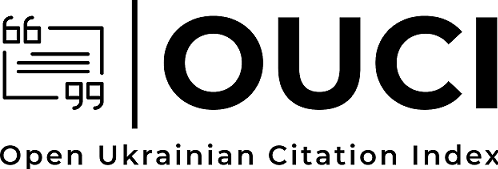THE CANONS OF APPEARANCE AND ORGANISATION OF LEISURE FOR TEACHERS OF PROVINCIAL TOWNS AND VILLAGES OF THE UKRAINIAN SSR IN 1945–1980s
DOI:
https://doi.org/10.28925/2524-0757.2018.2.8993Keywords:
Soviet intelligentsia, everyday life, way of life, microhistory, 20 centuryAbstract
Education system of the USSR gave the great opportunities for formation of a new type of person — Homo Sovieticus. So, the teacher was supposed to be an ideal of communist morality. The Communist Party has always followed the personal lives of teachers. Teacher’s appearance has always been clearly regulated. Clothing, hairstyle, make-up was canonically restrained. Leisure was focused on self-education or socially useful activity. The purpose of this publication is an illustration of Soviet teacher`s appearance (clothes, hairstyle, make-up, accessories) and leisure activities. So, the research is based on archival materials, memoirs and previous studies. Having analysed the memoirs and previous studies, the author makes the following conclusions. In the USSR, the appearance of the teacher was not assessed in terms of fashion or style, but in terms of purity, modesty and precision. In the first postwar years there was a big shortage of clothing. Male teachers continued to wear military uniforms. Women dressed simple dresses, mostly dark colours. Since the 1960s, when the fashion began to penetrate the USSR, teachers also followed the trends. It was possible to make a fashionable hairstyle, to wear fashionable clothes. Widespread form of leisure was the watching movies in the cinema. Widespread were also active holidays, sports, walks in parks, reading books and newspapers. Such aspects of the life of Soviet teachers as appearance and leisure are not studied enough. At the same time, this topic is promising. Scientific research can be supplemented with a large number of archival materials and photos. Besides, during the further study of this topic it should be used the method of oral
history.
Downloads
References
Belova, N. (2015). Povsednevnaia zhizn uchitelei. Moskva: IEHA RAN [in Russian]. http://static.iea.ras.ru/books/Belova.pdf
Zubkova, E. (2000). Poslevoennoie sovetskoie obshchestvo: politika i povsednevnost, 1945–1953. Moskva [in Russian]. http://vkist.ru/download/7830.pdf
Intellektualnyi sloi v sovetskom obshchestve. Nekotoryie kharakternyie cherty sovetskoi intelligentsii [in Russian]. http://www.samisdat.com/5/55/554-4gl1.htm
Kohan, L. N. (1979). Intelligentsiia v period razvitogo sotsializma. SY, 4 [in Russian].
Fond 4, Unit 0045, Muzei istorii Fastivskoi serednioi zahalnoosvitnioi shkoly № 9 (dali — MIFSZSh № 9).
Fond 4, Unit 0474, MIFSZSh №9.
Fond 4, Unit 0490, MIFSZSh №9.
Fond 4, Unit 0503, MIFSZSh №9.
Prokhorenko, O. (2010). Naukovo-pedahohichna intelihentssiia yak socialno-profesiinyi prosharok v 1945–1955 rr.: Povoienna Ukraina: narysy socialnoi istorii (druha polovyna 1940-x — seredyna 1950-kh rr.). Kn. 2, 177–208. K. : Instytut istorii Ukrayiny NAN Ukrainy [in Ukrainian]. http://shron2.chtyvo.org.ua/Zbirnyk_statei/Povoienna_Ukraina_narysy_sotsialnoi_istorii_druha_polovyna_1940-kh__seredyna_1950-kh_rr_ch_12.pdf
Published
How to Cite
Issue
Section
License
Copyright (c) 2019 Kyiv Historical Studies

This work is licensed under a Creative Commons Attribution-NonCommercial-ShareAlike 4.0 International License.
Authors who publish in this journal retain the right of authorship of the work and give to the journal right of first publication of this work under the conditions of Creative Commons: Attribution-NonCommercial-ShareAlike 4.0 International (CC BY-NC-SA 4.0), which allows others freely distribute the work published with reference to the authors of the original work and the first publication of this magazine.














